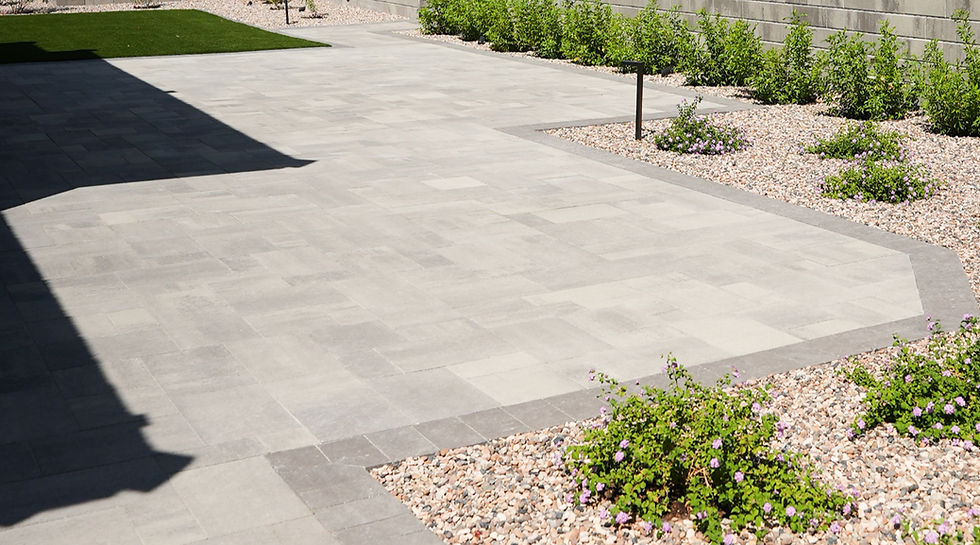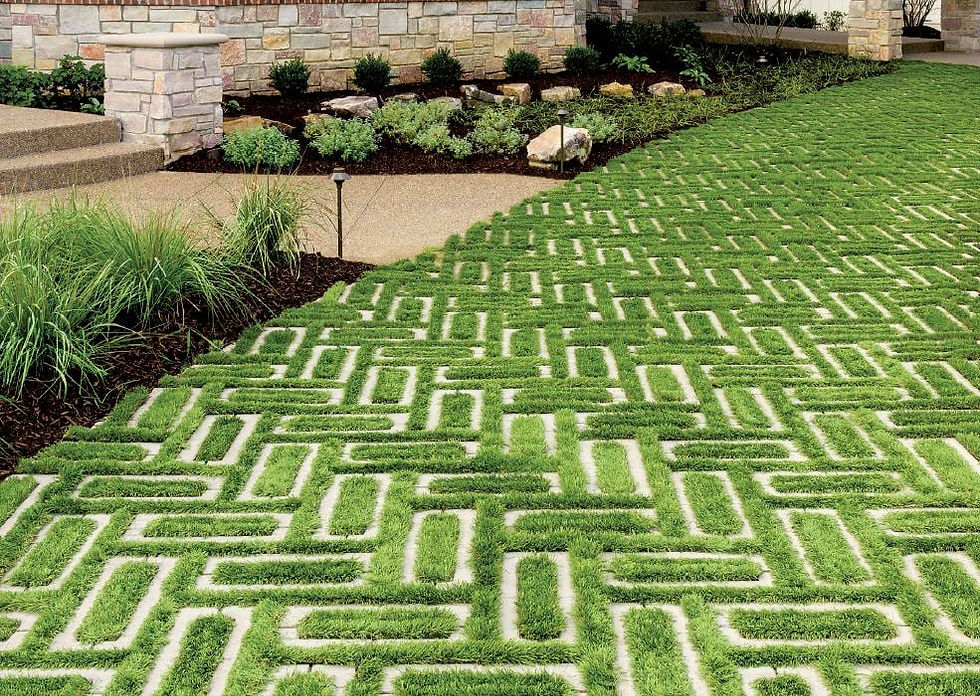Paving the Way: A Guide to Residential Pavers
- Living Water Team

- Jul 17
- 4 min read
When planning landscaping for your home, one critical element often overlooked is the choice of paving materials. Landscaping pavers provide not just functionality for paths and outdoor spaces but also enhance the aesthetic appeal of your property. Understanding the different types of landscaping pavers and their characteristics can help homeowners make informed decisions that blend beauty with durability.
What Are Landscaping Pavers?
Landscaping pavers are hardscape materials used to create outdoor surfaces such as patios, walkways, and driveways. They come in various materials, shapes, and sizes, allowing homeowners to tailor their outdoor spaces according to their unique preferences.

Types of Landscaping Pavers
1. Concrete Pavers
Concrete pavers are among the most popular choices due to their versatility and durability. They are manufactured by mixing cement, sand, and aggregate, which can be molded into various shapes and sizes.
Concrete pavers come in a wide range of colors and textures, allowing homeowners to achieve the desired look for their outdoor spaces. They are resistant to weather and wear, making them suitable for high-traffic areas.

2. Brick Pavers
Brick pavers are made from clay and are known for their classic charm and timeless appeal. They offer a warm, rustic look, making them an attractive option for walkways, patios, and pool decks.
Brick pavers are highly durable, weather-resistant, and can last for decades with minimal maintenance. Their natural color variations add depth and character to any landscape design.

3. Natural Stone Pavers
Natural stone pavers, such as slate, granite, limestone, and travertine, bring unparalleled beauty to outdoor spaces. Each stone is unique, offering a variety of textures, colors, and patterns that can enhance the landscape's overall aesthetic.
While more expensive than concrete or brick options, natural stone pavers are incredibly durable and can withstand harsh weather conditions. They require sealing to prevent staining and maintain their appearance over time.

4. Porcelain Pavers
Porcelain pavers are gaining popularity due to their high-quality finish and versatility. Made from dense clay, these pavers are fired at high temperatures, resulting in a tough, durable surface that is resistant to scratches, stains, and fading.
Available in a wide variety of colors and designs, porcelain pavers can mimic the look of natural stone or wood, adding style to patios and outdoor areas. They are also non-porous, making them easy to clean and maintain.

5. Rubber Pavers
For homeowners looking for an eco-friendly option, rubber pavers made from recycled rubber are worth considering. These pavers are soft underfoot, making them suitable for areas where children play.
Rubber pavers are slip-resistant, durable, and available in various colors and designs. They are particularly ideal for pool areas and playgrounds, offering a safe surface that can withstand UV exposure and extreme weather.

6. Grass Pavers
Grass pavers provide an innovative solution for those who want a blend of greenery and hardscape. These pavers allow grass to grow in the spaces between them, creating a permeable surface that reduces stormwater runoff and increases soil absorption.
They are perfect for driveways and paths in areas where a natural look is desired. Grass pavers also contribute to a sustainable landscape by promoting biodiversity and improving air quality.

Factors to Consider When Choosing Landscaping Pavers
Choosing the right landscaping pavers involves considering several factors that align with your preferences and functional needs.
1. Aesthetic Appeal
The visual impact of the pavers should complement your home’s architecture and overall landscape design. Consider the color, texture, and material to create a cohesive look.
2. Durability
Evaluate the climate and weather conditions in your area. Ensure that the pavers you choose can withstand freeze-thaw cycles, heavy rainfall, and other environmental factors.
3. Maintenance
Different types of pavers have varying maintenance needs. Natural stone may require more upkeep than concrete, which might need periodic sealing. Assess how much time and effort you’re willing to invest in maintenance.
4. Installation
Some pavers are easier to install than others. If you plan to do it yourself, consider the complexity of the installation process, or hire a professional for more challenging options like natural stone pavers.
5. Cost
Budget is an essential consideration for most homeowners. While natural stone pavers offer aesthetic appeal, they also come with a higher price tag. Balancing cost with quality will help you make a sound investment in your landscaping.
Conclusion
Choosing the right landscaping pavers is vital for enhancing your outdoor spaces and ensuring they last for years to come. Whether you prefer the charm of brick, the versatility of concrete, or the elegance of natural stone, there is a wide variety of options available to suit your style and budget.
By considering the factors discussed in this guide, homeowners can make informed, strategic decisions for their landscaping projects, ultimately leading to beautiful and functional outdoor environments.
Remember, the right choice not only adds value to your home but also enhances your outdoor living experience, making it a space you’ll love for years to come.




Comments